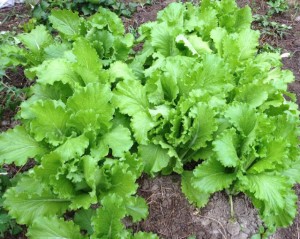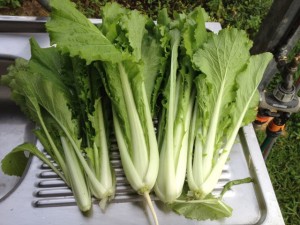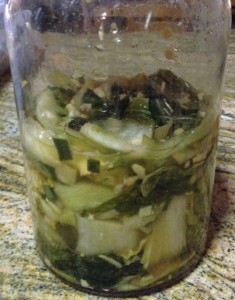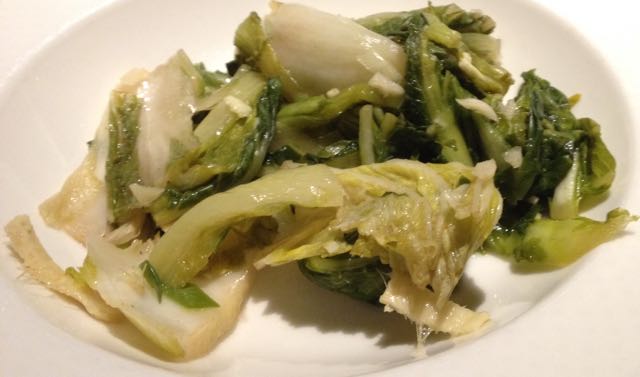Wom Bok, chinese cabbage, napa cabbage; whatever you call it, it’s a great vegetable to grow. It’s super quick and trouble free if you can keep the caterpillars off it. And on top of providing delicious greens for stir fries, soups or steaming, you can keep it and transform the flavour by making kimchi.

Autumn is a good time to sow wom bok here in the subtropics. The plants reach picking size very quickly. I don’t leave them too long, as they will flower in the warm weather before they form dense hearts, but I can get a good crop of greens by thinning out the plants over a few weeks. Maybe as we head into the cooler weather the new sowings will heart up.

Kimchi making is very easy; don’t be put off by the fermentation process. After my first tries with kimchi last year I think I have developed the version that suits me best. I’ve dropped all the fussing about with a starchy binder and fish sauce, so it mightn’t appeal to Korean tastes, but I find the flavour nice and straightforward.

Anyone who wants to try should of course read the authentic recipes and choose one that suits them. But for comparison with what works simply here’s my version:
Chop the cabbage and salt it overnight. Rinse well, mix with chopped garlic and ginger, some green onion and chilli powder. Pack tightly into a glass jar, and add water to just cover. Pack again, cover and leave on the bench to ferment. You can sample it over the next days until it is sour enough to your taste, then refrigerate it.
The daikon harvest has also been big, so my next trial on these rainy days we are having will be daikon kimchi.

